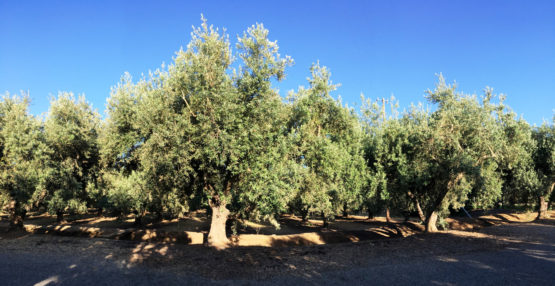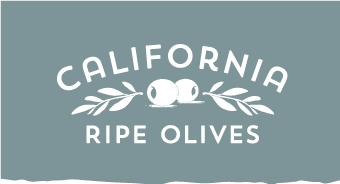
From the Farm to the Table
The California Olive Committee is comprised of hundreds of family farms and two multi-generational canneries, who grow and process 50,000+ tons of olives each year.
California produces over 95% of the olives grown in the US--but that doesn't mean we're all big business. Hundreds of farmers and their families work each year to bring California Ripe Olives from their farms to your table. Our groves range from small 5-acre lots to 1,000-acre farms. No matter where they come from, each olive is treated with the highest level of care from planting to harvest by some of the finest stewards of the land. California Ripe Olives are one of two varieties: Manzanillo and Sevillano. These two varieties produce different sizes of olives, giving consumers a choice ranging from small to colossal.
To see California Ripe Olives in their natural environment, take a trip to California's Central Valley, where trees span the state from North to South. Over 56% California Ripe Olives groves are located in Tulare County in the central San Joaquin Valley. 36% of California Ripe Olives are grown in Sacramento, Glenn, Tehama, and Butte counties. The other 9% are grown in Kings, Kern, Fresno, and Madera Countries. Meet some of the families that devote their lives to growing and cultivating California Ripe Olives.

PLANTING:
Olive trees are naturally an alternate bearing fruit, meaning their production amounts can vary from 50,000 tons one year to over 160,000 the next. Olive trees generally bloom in May, with small cream-colored flowers blossoming throughout the orchards, and continue to grow and start to ripen throughout the summer. Harvesting begins in the early Fall while the olives are still green in color, but are starting to darken.
HARVEST:
Harvest generally starts in early September and concludes in mid-November. California Ripe Olives can be harvested by hand, or with a mechanical harvester. For hand-harvesting, crews use ladders to reach the fruit and carefully pick the olives off each branch, tree by tree. There can be up to 1,000 olives on each tree, so each crewmember is only able to harvest 2 or 3 trees in a day. Some farmers, however, are now utilizing mechanical harvesting, which increases the speed in which olives are harvested. Upon harvesting, the olives are then sent to one of California's two processing plants where they are sorted, graded, and stored until ready for curing.
CURING:
Curing is essential to the process because olives straight off of the tree are too bitter to eat. While there are many different curing methods used around the world, our curing process is essential to the unique taste of California Ripe Olives.
The method of processing California Ripe Olives was and is the same process used today and was invented by a woman named Freda Ehmann. Freda’s method is a seven-day process that is initiated by soaking olives in a lye curing solution to leach out the bitterness. This soaking period is followed by a series of cold-water rinses designed to remove all traces of the curing solution. During the multi-day curing process, pure air is constantly bubbled through the olives. This air is what creates their rich, dark color. However, California Ripe Olives that do not have exposure to oxygen in their tanks will remain green in color. A trace of organic iron salt (ferrous gluconate) is occasionally added to the mixture for black olives only, to maintain the historically rich black color of California Ripe Olives even after the cans are stored.
CANNING:
California Ripe Olives are canned in a mild salt-brine solution, and because they are a low-acid product, they are also heat sterilized under strict California State health rules. In addition, they are inspected by the U.S. Department of Agriculture, to ensure consistent quality, color, flavor, and texture. California Ripe Olives are offered in a variety of convenient forms including: whole, pitted, sliced, chopped, or wedged. They are readily available year-round in your local grocery store.
Olive Canners
There are two olive canneries in California. Both are multi-generational family businesses.
Bell-Carter Foods, Inc. / Lindsay Olives
590 Ygnacio Valley Road, Suite 300
Walnut Creek, CA 94596
Contact: Scott McCoy
Phone: (925) 299-5077
www.ilovelindsay.com
Musco Family Olive Co.
17950 Via Nicolo
Tracy, CA 95377-9767
Contact: Dan Kelly
Phone: 866-965-4837
www.olives.com

